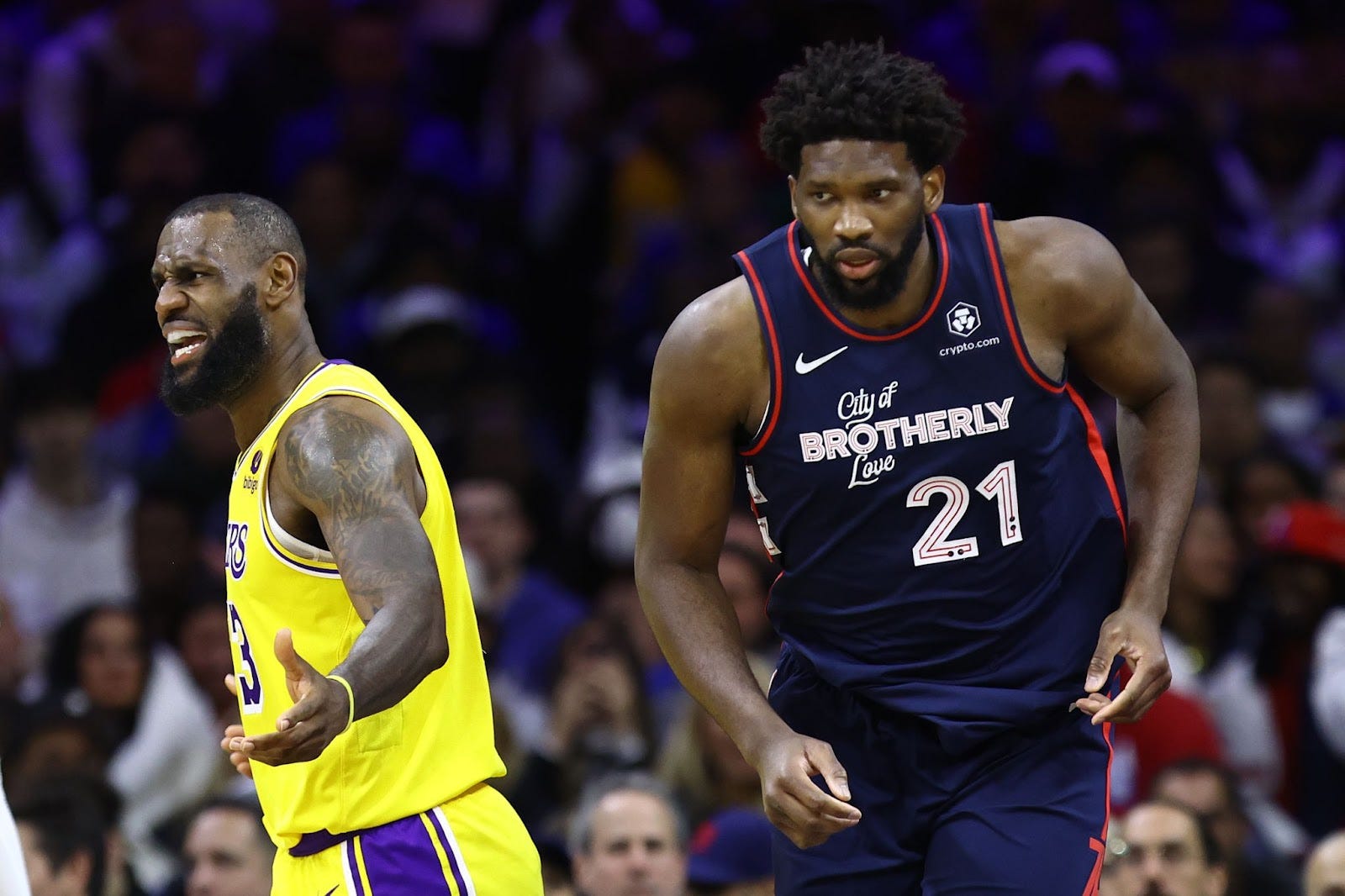The problem with “unthinkable”
Legends can, and sometimes should, be traded or cut
BY HENRY ABBOTT

We’re deep enough into the NBA season to know that the Lakers won’t win the title. Neither will the 76ers. Probably not the Bucks, Warriors, Clippers, or Suns, either. By my count, eight of the ten highest payrolls are already to the point where they start asking what went wrong.
To cure the disease, it’s critical to get the diagnosis correct. Let’s assume the 76ers will do something. Doing the wrong thing could easily damn them to years of irrelevance.
Are the 76ers terrible because the roster lacks the talent to withstand Joel Embiid’s predictable absences? If that’s the case, they might want to throw everything they have into a trade-deadline deal for a starting power forward.
Is Paul George past his prime? If that’s the case, no need to be sentimental: see what the trade market looks like for PG.
Have the players tuned out Nick Nurse? That would pro…
Keep reading with a 7-day free trial
Subscribe to TrueHoop to keep reading this post and get 7 days of free access to the full post archives.

